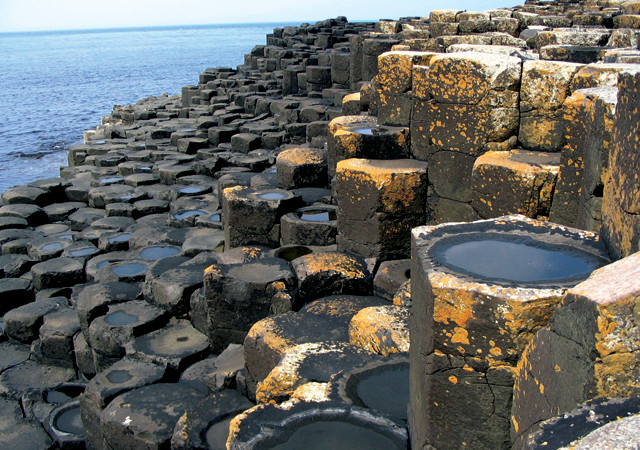
by Adityarup "Rup" Chakravorty Tuesday, July 3, 2018

A new study found that columnar joints form at temperatures between 840 and 890 degrees Celsius. Credit: public domain/Patrice78500.
When molten rock cools and contracts, it sometimes cracks to form geometrically shaped columns. This process, called columnar jointing, has led to several famous geological structures, including Giant’s Causeway in Northern Ireland and Devils Postpile National Monument in California.
In a new study published in Nature Communications, researchers studying basalt cores from Iceland’s Eyjafjallajökull Volcano have, for the first time, determined the temperature at which columnar jointing occurs. “The temperature at which magma cools to form these columnar joints is a question that has fascinated the world of geology for a very long time,” said co-author Yan Lavallée, a volcanology professor at the University of Liverpool, in a statement.
In the study, researchers first heated cylindrical cores of basalt that were clamped on both ends to about 980 degrees Celsius, the highest temperature at which the cores remain completely solid. Then they allowed the cores to cool. Stress built up as the cores cooled and contracted and — at temperatures between 840 and 890 degrees Celsius — they fractured into columns.
The cracks formed by columnar jointing allow fluids, including water, to circulate through rock formations. That’s important because “fluid flow controls heat transfer in volcanic systems, which can be harnessed for geothermal energy production,” said study co-author Jackie Kendrick, a postdoctoral researcher at the University of Liverpool. “The findings have tremendous applications for both volcanology and geothermal research.”
© 2008-2021. All rights reserved. Any copying, redistribution or retransmission of any of the contents of this service without the expressed written permission of the American Geosciences Institute is expressly prohibited. Click here for all copyright requests.